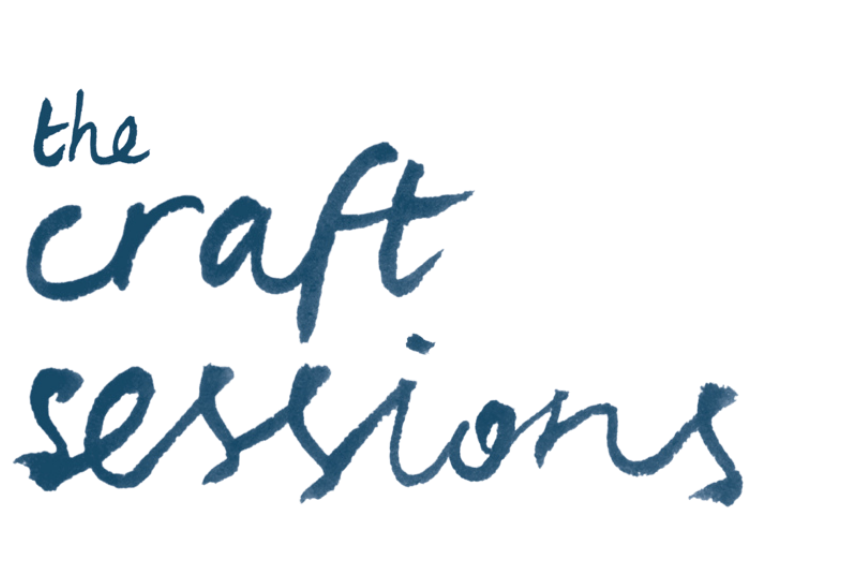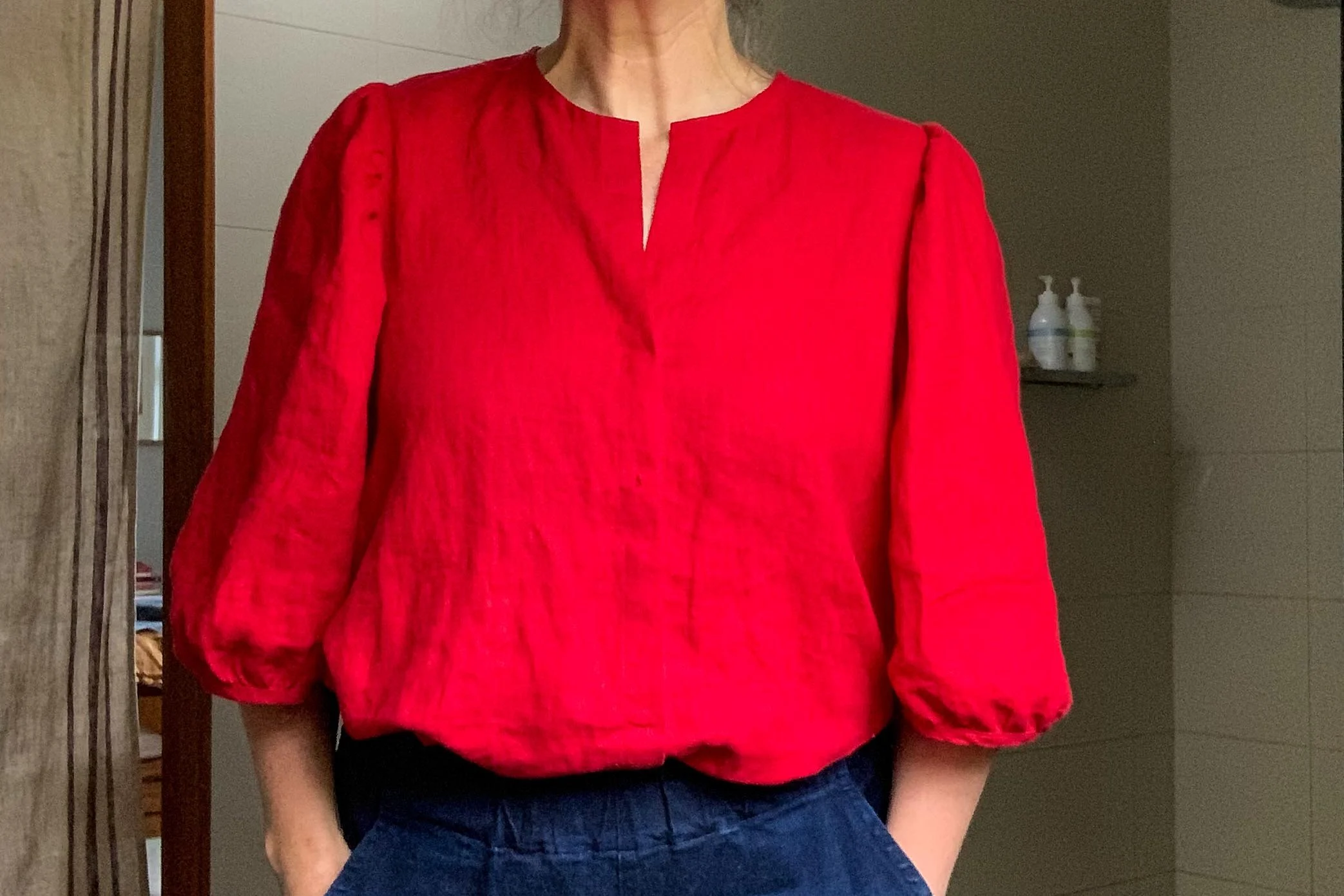It's Slow Fashion October so this post could be seen to be badly timed. It's not. But it could be. I'm going to talk about it some more on Friday, but to me Slow Fashion October doesn't necessarily mean that your making needs to be slow. It simply means being considered about what you make. Once you've decided what to make then game on.
That said, obviously sometimes I love to create in a slow meditative way. Slowing down, using my craft as a way to provide daily nourishment for my soul. Other days I just want/need to get. it. done! I had three kids you see, and they go through (as in wear-out-in-an-unmendable-way) a lot of clothing.
So this last weekend my oldest kid needed shorts. Lots of shorts. He is an all-year-round short wearer, which when combined with sport and hooning around the playground, means that he is particularly hard on his outfits - as you are when you are small and having fun. Of course that makes me glad, but it often means that he brings me shorts with the bottom part missing totally, or with fabric so thin they are unrepairable. He always believes that I am capable of repairing them - bless! - so I have on occasion, just had to "disappear" them. They do get to a stage where they are best left to RIP.
So I often find myself making in multiples - to fill the need quickly. This weekend past I set the ambitious target of four pairs of shorts, to be made in an hour here and another hour there, and one evening stint that finished just after midnight. As I was making them I realised that when I'm doing this kind of "smash it out" sewing, I actually have a whole heap of techniques that I use to speed up the process, and be more efficient. I know you guys like a bit of a trick, so I thought I'd share.
Keep in mind that while these techniques work a treat if you are making a single garment, they work even more splendidly if you are making multiples.
Get set up.
- Pre-wind your bobbins so they are ready to go. If I am making multiples then I normally wind at least two bobbins, if not four. You can buy extra bobbins at your local sewing shop and they are a great investment. I have about ten for my machine, pre-wound with my "neutral" colours (see below).
- Change your needle. You need to do this for every 8 hours of sewing but I find that changing at the start of each major project works pretty well for me. Who would actually know what 8 hours looks like? It's worth the expense - the machine will work better. Your stitches will be more even and get tangled less often.
- Gather your other materials and read through the pattern to mentally combine the steps you can.
- Use a water soluble marking pen to mark the right side of your fabric with a big cross. This means that you don't waste minutes of your precious time trying to figure out the right side of your linen.
Prewound bobbins, thread-snips, bowl for loose cottons and spare thread.
Pre-winding.
My favourite water-soluble marker that I use to mark notches and right sides of fabrics.
Texta marks to show the right side of the fabric.
While you are sewing
- Where possible don't pin. Or pin minimally. This you can only learn with practice, but often you only need a pin or two for the seam - one at the start and one towards the end - rather than 5/10/15 pins. Just hold the edges together as you sew with your right hand and use your fingernails to scratch the fabric into place rather than pinning.*
- When you need pins, pin perpendicularly to the raw edge of the fabric with the pin head sitting on the outside of the fabric. This means you can take the pins out easily without slowing your sewing down too much.
- Minimise interruptions to flow. This one is critical. You want to minimise the number of times you need to get up and down from your sewing machine.
There are basically three steps to sewing - pinning, sewing and ironing. You want to minimise the number of times you change from one to the other as it interrupts your flow. And flow is what it's about people.
If there is pinning to do, then pin everything you can (as in the next two or three or even four steps of the pattern where you can) before moving onto the next step of sewing those pinned seams.
For example when I was making the aforementioned shorts I sat down and pre-finished all the edges the pattern suggested in one go before then moving on to the first step - which was to sew the pockets to the fronts, which I did without pinning, to save time. I then finished the edges of the pocket seam and only then did I get up from the machine to press them flat.
- Always ALWAYS snip your threads as you go. This could change your life. Depends on your life obviously.
- Chain piece!!!! This is the single biggest thing you can do to improve your speed and output. It's super simple and probably easiest to explain through the diagrams below.
What chain-piecing involves is having multiple seams ready to sew, and then you sew them without cutting your threads in between each seam. It doesn't matter if they are the same type of seams or different seams. This is most easily understood by looking at the photos below.
You still do a back stitch or two at the start and end of each seam where appropriate. But you don't then lift the foot, and pull up the needle, and cut the threads. Instead you sew 1cm without any fabric under the needle, and then guide the next seam you need to sew, into the machine. You do a backstitch so it doesn't come undone and then keep hooning through your seaming. When you are finished as many seams as you can then just snip the threads in between each piece. This is a technique borrowed from the quilting world that works beautifully with garment sewing.
A pile of pieces ready to be sewn. In this case they don't need to be pinned as I was finishing the edges with a simple zigzag.
Backstitch just as you are finishing each piece to secure the thread before leaving a cm of sewing. Then guide in the next piece doing a simple backstitch as the needle hits that piece to ensure the thread doesn't unravel.
This is the third piece being added to the chain.
This is six pockets and six fly pieces all chainstitches together using dirty grey cotton for three different pairs of shorts.
Up close showing also the thread between pieces and the blue water-soluble text mark showing me the right side.
Chain pieced fronts of trousers.
Chain-piecing finished the edges after sewing the pockets to the fronts.
Some things about multiples.
If you can make multiples then do. The effort involved in making one of something versus three of something is really similar. At a guess I would say that I can make three pairs of shorts at the same time, in the time it would take me to make one pair, and then make a second.
This only works if;
- You choose fabrics that mean that you only use one colour cotton. With the shorts above I chose kinda wisely. For the denim, duck-egg linen and herringbone shorts I used the same dirty blue cotton. For the yellow shorts I used an off white which meant that I needed to sew them separately. **
- You choose fabrics that are similar in weight so you don't need to change the needle.
A couple of things to note.
*About pins - There are times when you need pins and lots of them. Gathers, bindings, waistbands that need to be spread evenly, set in sleeves AND every time you are matching a seam with another seam.
** A note about neutral cottons - This is something that I do with all my sewing. I use six colours of thread no matter what the project. I call them my "neutrals", and they are off-white, grey, dirty blue grey, red, navy and black. My two most commonly used colours are off-white and dirty blue grey. They go with nearly everything. The only time I change to a matching colour is when I change the top thread only in order to topstitch a waistband or a hem. I don't change my bobbin colour as it is on the inside. Obviously this is for everyday sewing - special birthday sewing gets matching cotton. Sometimes at least.
All three skirts were made at once with dirty blue grey cotton. Obviously not the ideal choice for the yellow spot skirt, but after over two years of wear I've never had anyone look inside the garment and be appalled by my cotton colour choice. It meant I could make all three at once, chain piecing, which is infinitely faster than making things one at a time. I changed the top thread only to topstitch the waistband and the hem of the yellow skirt. Works a treat.
Anything you experienced sewers would add that I've missed?
Felicia x















